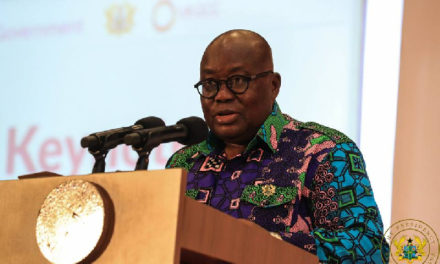INTRODUCTION
IMANI believes analysing government’s budget will enhance accountability in the spending of taxpayers’ money and will lead to democratic and development outcomes in the country.
After assessing the 2017 and the 2018 budget in connection with the Government’s Medium Term Development Plan, it appears government is making diligent efforts to restructure the economy, however,
- The exogenous shocks appear to expose systemic inefficiencies in our development programmes.
- For some of the programs that government is implementing, it is difficult to see if they are clearly following up on value for money to ensure there is efficiency of cost.
- There should be a coordination and synchronization of government policies and programmes.
- There should also be a coherent strategy on the implementation of policies and programmes.
ECONOMY
Major Observations
Indicators
- Real GDP growth was 8.5 percent in 2017 compared with 3.7 percent in 2016, according to GSS.
- Major drivers were increased crude oil production and relative stability in energy supply, according to BoG.
- It reiterates the relevance of stable energy supply to Ghana’s growth.
- Real GDP growth excluding oil was only 4.9 percent, according to BoG.
Policies are required to diversify the economy and generate growth in other sectors as well.
Agriculture Sector
In the 2018 Budget, GoG stated that, “our main drive for the economic sector is to improve agriculture production and productivity.“
The Planting for Food and Jobs
Programme is intended to improve work opportunities for all, especially women to improve their incomes and address gender inequalities in line with the Sustainable Development Goals, according to the 2018 Budget.
Selected Developments:
- Although, the government in the 2017 budget projected about 750,000 jobs would be created under the Planting for Food and Jobs program, the 2018 budget provided no details on the number of jobs
- What we know is that the Minister for Food and Agriculture stated that about 745,000 jobs were created in 2017, according to myjoyonline.
- The GLSS 7 has indicated that the rate of poverty reduction has slowed and inequality is rising.
Implications:
- Planting for Food and Jobs Programme would not only create employment, but also assist in reducing poverty reduction and economic or gender inequality should they be implemented efficiently and scaled up.
- With the launch of the 2018 Ghana Census of Agriculture, it is expected that government not only formulate suitable strategies, but also ensure detailed monitoring and evaluation critical to the success of programs and policies in the sector.
Industry – 1D1F
- After experiencing negative growth rates in 2015 and in 2016, the industry sector bounced back in 2017 with a growth rate of 17.7% (Source: 2018 Budget)
- Growth rate in Q1 of 2018 was 9.6% (Source: Bank of Ghana).
- Main drivers of growth: Petroleum as non-oil GDP accounted for just 58% of GDP growth in 2017.
- Manufacturing sector is recovering from the power crisis of 2015.
- Government intends to tap into the huge potential in manufacturing sector through the 1D1F program.
- Progress on the 1D1F has however been slow, given the target.
Selected Developments:
- Media reports that 15 factories have began operations under 1D1F
- 332 projects identified for financial support
- Cabinet has approved incentives (including tax waivers)
- There has been some efforts to improve the business environment – taxation, starting a business, trading.
- However there is still significant levels of uncertainty and lack of predictability in the business environment – trading across borders and enforcing contracts.
Implications:
Given the long term nature of industrialisation, without increasing efforts to improve predictability in the business environment, investment flows will be below expectations even with the approved incentives.
This will greatly affect the industrialisation agenda.
Service sector
- The sector continues to dominate the dominates the economy
- Its share of GDP estimated at 55.9%( 2018, Budget).
- In 2017, the sector grew by 4.3% which was largely driven by information and communication technologies and education.
- Financial and Insurance activity, an important sector within the service sector experienced a positive growth of 4.7% within the same period despite existing challenges such as high non-performing loans which was estimated at 21.99% as at August 2017.(BoG, 2018).
Selected Developments:
Growth in Non Performing Loans has reduced due to the increase in loan recoveries predominantly driven by proceeds from the ESLA bonds.
BoG recently embarked on some reforms to enhance stability within the financial sector. Key initiatives included:
- Supervise the acquisition of two banks by GCB
- Consolidating five banks
- Injecting about GHC 8.35 billion to address the asset-liability gap.
Implications:
Given the recent developments and revelations within the financial sector, the establishment of the much talked financial stability council is critical to complement the efforts of the Central Bank.






Facebook Comments